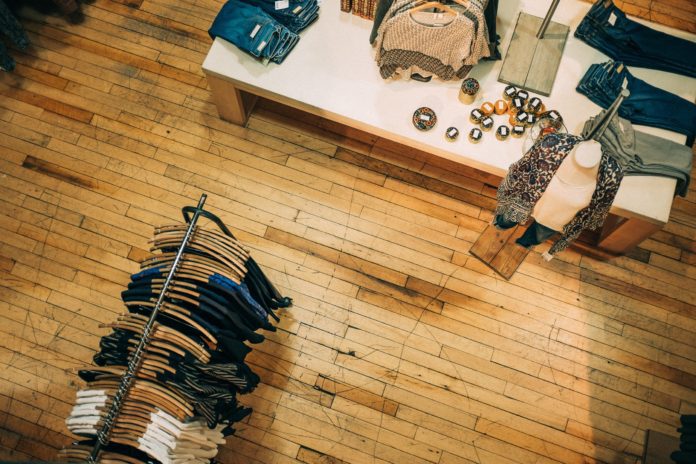Retail, like most industries, is changing. But the historic rate at which once-booming businesses are closing down distracts from the fact that although the names on suburban storefronts are starting to look a lot different than they did five years ago, 2018 is actually shaping up to be a pretty good year for many retailers.

Marc Gingras, CEO and founder, of Foko Retail highlights 8 of the Biggest Misconceptions About Retail in 2018.
Not Every Major Retailer is Closing Up Shop
Over 70 million square feet of retail space is slated to go empty in the next few months, with retailers like Toys”R”Us, Wallgreens, and Best Buy closing its doors. It’s a staggering statistic, but it ignores the fact that, for many retailers—like Target, Ulta, Dollar General, Five Below, and CostCo—2018 is shaping up to be one of their best years yet. That’s because, as retail strategist Steven Denis recently pointed out in Forbes, retail isn’t dead, but boring retail is. Nimble retailers are staying in business by adapting to the times, experimenting with new concepts while reducing their footprint to keep costs down. While it’s true that some of retail’s giants have fallen, it seems there are just as many, if not more, retailers and brands around willing to take their place.
Unlike their Millennial Counterparts, Gen Z Actually Prefers to Shop In Stores
Surprising, I know, but technology’s earliest adopters would rather touch or try on a product than read about it online. According to a recent survey by PwC, 81% of respondents said they preferred to shop in stores, while 40% of those polled said they exclusively shop in physical locations. That’s good news for retailers—as Chain Store Age reports, Gen Z will become “fully fledged consumers” by 2023, giving their demographic cohort the second highest amount of spending power in society.
Shopping Online Actually Takes Longer
It’s common knowledge that shopping online is easier than shopping in stores, right? But does it actually save time? According to the Harvard Business Review, not really. It turns out 57% of shopping journeys either began with a customer visiting another website (29%), visiting a physical store (15%), or both (13%) before completing a final transaction. That means the majority of online shoppers are constantly comparing prices and researching products, either online or in-store, before heading to check out (if they even make it that far—10% of shoppers abandoned their online carts and took their business elsewhere based on a company’s shipping and return policy alone.) Although e-commerce is growing, 80% of all retail sales will still occur in physical stores in the year 2025. Brick-and-mortar retailers should train their store associates to help speed up the sales process so customers don’t have to look for information or deals elsewhere.
It’s Not All About Digital—More and More E-commerce Companies are Moving to Brick-and-Mortar
Thriving e-commerce companies like Warby Parker, Everlane, Casper, Harry’s and Untuckit have all opened retail spaces in recent years to improve brand recognition and increase direct-to-consumer sales. Even Amazon and Google are upping their physical game, with the former buying Whole Foods and opening bookstores, and the latter plying their Pixel 2, Pixel 2 XL and Google Home Mini in pop-up stores across the east and west coast.
Malls Aren’t Dying, They’re Evolving
The past few years have seen a spate of half-empty retail spaces in malls as a number of big-box chains struggle to cover their costs and turn a profit.
Thankfully, property owners are doing their best to turn around shopping centres across the globe. Take the Easton Town Center in Columbus, Ohio, who are exploring new retail options with Shop Lab, a 500-sq.-ft. space that will rotate a number of startups and clicks-to-bricks retailers. Or look at owners across the continental U.S. who are planning to redevelop vacant properties and fill them with everything from office spaces to residential homes in a move that would make Victor Gruen proud.
Shopping Journeys Are Far From Being Truly Omnichannel
Last year’s favourite buzzword continues to dominate conversations within the retail industry. But does it deserve all the attention? According to a study conducted by the Harvard Business Review, 83% of customer journeys still occur within a single channel—especially in apparel, which occupies 80% of sales within the category. However, when it comes to collecting personal data—be it previous transactions or tastes—online has physical beat. That’s why retailers and brands need to up their experiential offerings and continue to find innovative ways to improve the in-store experience in order to incentivize shoppers to share their information.
Consumers Prefer to Shop Directly from Brands, Rather than Get the Same Goods from Other Stores
If a brand wants to boost sales, studies show they should keep things centralized and focus on brand consistency. Direct-to-consumer brand stores generate revenues 86% higher than purchases of same items sold elsewhere, according to the Harvard Business Review. They suggest following in Nike’s footsteps by offering products that can’t be found anywhere else.
Shoppers Would Rather Pay a Little or a Lot rather than getting Something at An Average Price
According to Deloitte, “premium retailers have seen their revenues soar 81 percent over the last five years, while price-based retailers have seen their revenues steadily increase 37 percent over the same period.” (Balanced retailers, on the other hand, have only experienced a 2 percent increase, which is why discount brands and luxury stores continue to flourish while department stores continue to struggle.
















